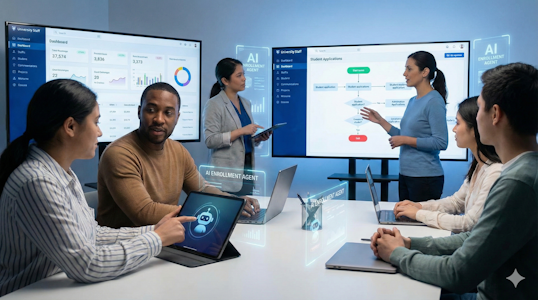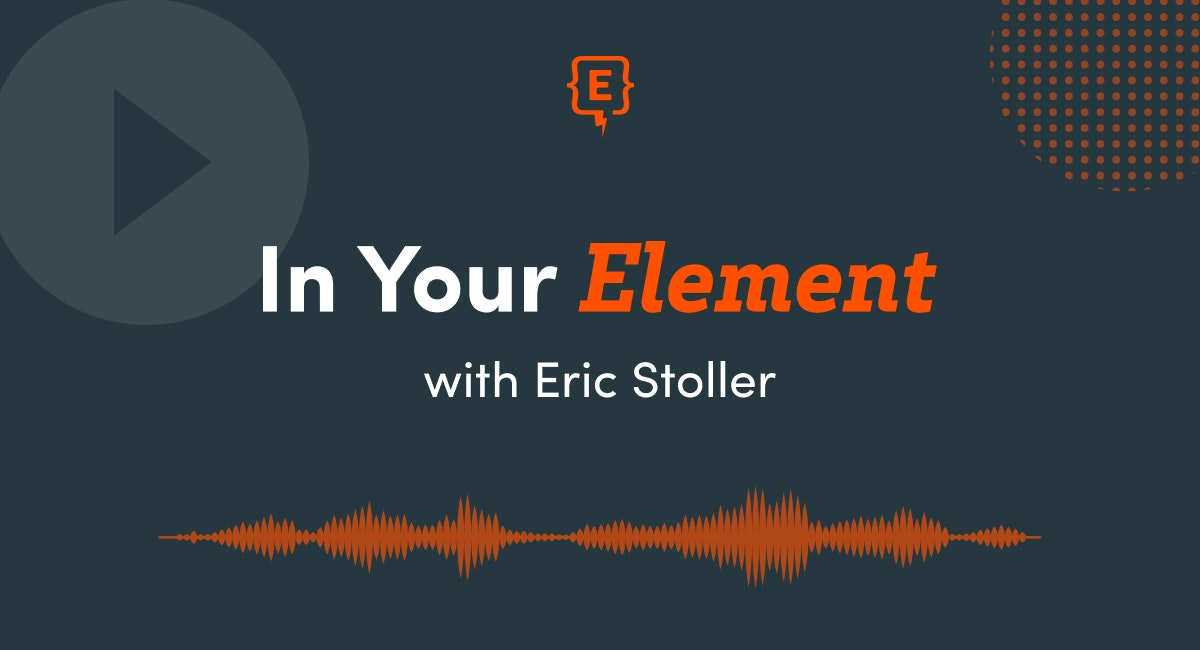Personalization in the Age of Information Overload — Lenell Hahn on Breaking Down Student Barriers
by Sirley Carballo · Feb 14, 2022
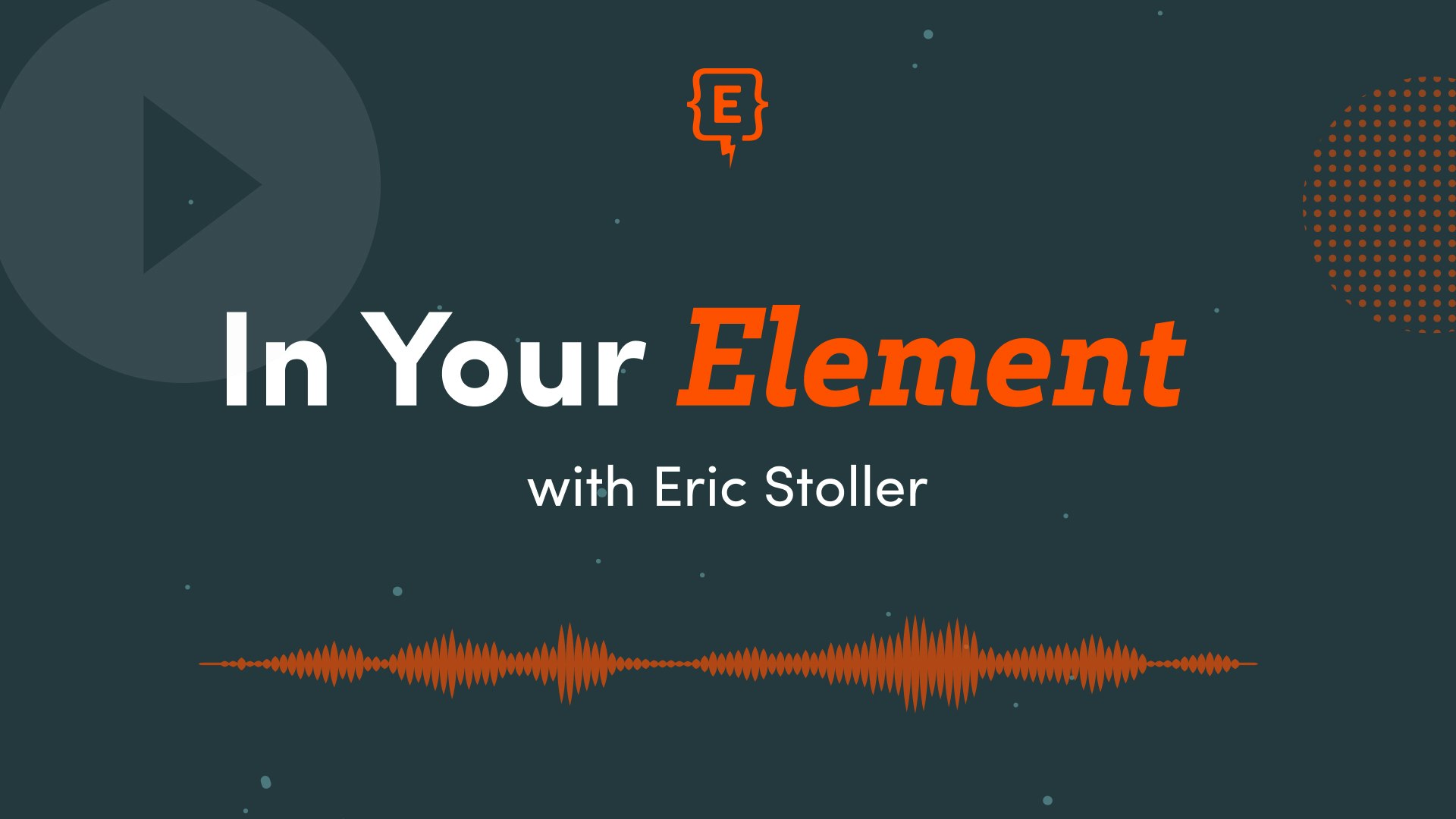
Lenell Hahn, Director Of Admissions at Southeast Missouri State University, sits down with host Eric Stoller to chat about the biggest challenges and innovations happening in the realm of student engagement. Together they discuss:
- What kind of technologies are necessary for the survival of colleges and universities
- How SEMO attracts students with personalized digital marketing strategies
- What means of communication are working to connect with prospective students?
- Why data lakes (or data lake houses) are crucial for decision making.
Listen to Episode 12 of the In Your Element Podcast here.

I think we really do have to take care of the communities that we serve first and foremost, w hich means we need to make sure that there's access to a quality, affordable degree at an institution that is committed to their success by supporting them really from the first day they start at your university until they graduate.

Full Transcript of Episode 12
Lenell Hahn:
Everyone's "why" for getting a college degree may be different. Everyone's barriers to accessing a college degree may be different. And so, really knowing those decision factors, so we can personalize that content that helps families get the information they need to make a decision because there's a lot of options out there. And the person who maybe gets back to them the quickest, or is the content that they're looking for, it can have the greater impact.
Eric Stoller:
Welcome to In Your Element, a podcast on the Enrollify Podcast Network brought to you by Element451, an advanced student engagement CRM, providing higher ed institutions with a competitive admissions advantage from recruitment to enrollment through the use of AI.
Eric Stoller:
On each show, we ask five questions about current challenges, exciting opportunities, and what's next in higher education? I'm your host, Eric Stoller. And today, we're talking to Lenell Hahn Director of Admissions at Southeast Missouri State University. Also known as SEMO. With Lenell I wanted to find out what it's like to be in sn admissions office? What kind of technologies they can't live without? How do they attract students with digital marketing strategies? And what means of communication are working to connect with prospective students? For Lenell, her professional home is SEMO.
Lenell Hahn:
I was serving as a graduate assistant in university relations while I was working on my MBA at Southeast. And the team there really encouraged me to apply for the university's very first admissions web counselor position. And I got the job, very first web counselor. So, having that word in there with the admissions counselor. So, I worked with our IT team and I built our very first set of automated email communication and created a prospective student portal.
Eric Stoller:
That was us back in 2003, 18 years ago, the internet wasn't what it is today. Social media didn't exist. And yet, here she was, the university's first admissions web counselor. Lenell advanced her career by continuing to upskill. And when someone left that was a little bit above her, she would apply for their position. And, in 2013, she became the Director of Admissions. Now, things can change in 18 years of working at a place, but nothing like the changes that have happened over the past 18 months. The past 18 months or so has been anything but normal. How are things going with recruitment?
Lenell Hahn:
Yeah, recruitment has been a lot of pivoting. And with the technology platform that we use, luckily, our ability to adapt to virtual recruitment went very well. As well as I think that it could, as the environment has allowed we have blended back in, in-person interactions but we will continue now, to always have a variety of options for families to connect with us. And it really has helped, as far as the family's ability to engage with us, whether it's in-person or virtual. So, recruitment has been changed forever and, in a good way, and also in a way that has presented a lot of challenges.
Eric Stoller:
Yeah. Now, you started off as sort of the first web admissions counselor for SEMO. Could you speak a little bit more about what's changed with how admissions and marketing has done in higher ed?
Lenell Hahn:
Yeah. So, the way that families shop for college has definitely changed. Their selection set has increased significantly. Of course, you have this whole digital landscape that everyone is in every day. So, we have to be where the families are. We need to understand what their decision factors are. And make sure that the relationship we're building with them is really personalized to what they need to know to make that decision.
Eric Stoller:
Yeah, it's interesting. I remember there were like three schools maybe that I was looking at seriously when I was a junior in high school and that got pared down even further when I looked at how far away things were, which wasn't super far. How do you compete in a landscape where, as you said, that selection set has expanded so much?
Lenell Hahn:
You have to have some form of understanding of what families are looking for, what they need to know, and how your campus would help them achieve their goals. Help them earn that college degree, land that first job, be able to support themselves financially. How can your institution have those impacts on that individual? Yeah, they're applying to a much larger set of universities. They're definitely taking a closer look at what that first bill's going to look like, what their discounts or opportunities are, scholarships, financial aid. And making sure that it's easy for them to navigate. That's really important.
Eric Stoller:
Yeah, definitely. You were talking about the price and discounts, and the things that the parents and family members look at, the things that perspective students when they're looking at it directly. You're at a regional institution, I myself went to the University of Northern Iowa. I went to a regional state institution as well. So, much love to the regional institutions. But how do you compete now with this looming demographic cliff, when it seems like students, they're few and far between in some ways and, like you said, they're going to a lot of different options now?
Lenell Hahn:
Yeah, I think we really do have to take care of the communities that we serve first and foremost, which means we need to make sure that there's access to a quality, affordable degree at an institution that is committed to their success by supporting them really from the first day they start at your university until they graduate. We've got to connect with youth early. We need to be breaking down barriers. Nurturing our P-20 partnerships, collaborating with area employers. We really serve a variety of populations. So you're traditional freshman, your adults, your online learners, your transfer students, your returners, international, graduate, your high school students wanting early college credit. There are so many populations of students and making sure that we're focusing on really maintaining, or growing that market share for those various populations, having a positive impact on the college-going rate. And you have to decide which academic programs can have a bigger reach than your region. So, there are opportunities where some of our programs, we can have a little more of, I don't want to say nationwide, but much broader than the region that we're dedicated to serving. And so that helps too, of course, if you have those programs you can really extend beyond your region
Eric Stoller:
Yeah. Punch above your weight as it were.
Eric Stoller:
Now, you mentioned so many different sorts of pipelines of students coming in. Traditional undergrads, transfers, international, online, graduate. You've been in the admissions game for a long time, I'm sure you've sort of seen that pipeline of students just grow, and grow, and grow in terms of overall diversity, and the ways in which you recruit them. I know you use a CRM to recruit students, as part of your sort of like tech stack. What are some of the things that you couldn't live without when it comes to the things that your CRM can deliver?
Lenell Hahn:
I think that the end-user experience is key. Making sure that it functions and displays well on a mobile phone. It has to be easy for students, families to navigate. The university's brand has to be evident throughout everything they see that that CRM can deliver for you. And you really have to be able to measure the effectiveness of outreach efforts through analytics. So, that platform needs to be able to deliver those analytics to measure that and assess. And, to me, those things are core.
Lenell Hahn:
I think some other vital aspect is the ease of getting data in and out of the system. This is not our first CRM. In our previous one, getting data in and out was painful. And that really can stall your effectiveness, and how quickly you can respond to someone. Because if you can't quickly get the data in, then you can't quickly get communication out to them.
Lenell Hahn:
I think other vital things are the ability to create landing pages, and email and SMS campaigns. Manage your events, your travel, your application for admission. Your recruiters need to be able to use it to build solid relationships with their students. And then, I will say some really amazing things that our CRM does is it provides behavioral analytics. It has the ability to automate decisions with intelligent admissions. And then, they just released the ability to do surveys directly within the platform. So, that's just amazing.
Eric Stoller:
Well, full disclosure to anyone listening Lenell is raving about the Element451 CRM platform, because everything that she said that they can do at SEMO is just built into Element451. I sound like a commercial all of a sudden. But I feel like that's important to state. And so, why is that behavioral analytics though, why is that important to you? Why do you bring that up?
Lenell Hahn:
Well, because if we know things that they're doing whether they're someone who's kind of died off, and they've had very little interaction with us or someone who's heavily engaged, it can impact what our outreach looks to them. And if you can get as granular of seeing what content they're viewing that's of the most important to them, you can serve more content related to that. And so, it can definitely positively impact your ability to personalize your outreach, and your ability to predict what enrollment is going to look like at your institution.
Eric Stoller:
Yeah which, I'm assuming, is extremely important given the lack of predictability these days.
Lenell Hahn:
Yeah this environment, I mean, we came into the Fall '21 recruitment cycle with a lot of things cut off that we had access to. Students not being able to take the ACT or SAT, not only meant we didn't have it for admission decisions, it also meant we didn't have it for record creation in our system of students who are interested in us by sending us their test scores. Your funnels just are crazy right now.
Eric Stoller:
Yeah. I mean, we always say that the funnel is no more... If it's a funnel it looks like, I don't know, some sort of abstract Picasso. But I think that the things that you're doing with sort of using that intelligence to guide your decision in these unpredictable times, I mean, that to me just makes sense because, I mean, part of your role is to be able to say to your bosses, "This is where we're at, where we're tracking," right?
Lenell Hahn:
Yes. And when you think about someone who has a territory, an admissions counselor, a recruiter, whatever you want to call them, they have to be able to segment their population of students that they're helping because they may want to sit down and make some calls, or text some students it helps them really drill down a population that's manageable to build that relationship with and make it even stronger.
Eric Stoller:
Now, what if I'm on your website, but I haven't told you who I am? I'm poking around. I'm looking at different bits of information. I haven't filled out an RFI form. You don't know me yet. What do you do with those stealth people who are just kind of floating around?
Lenell Hahn:
Yeah so, recognizing that they haven't gotten the messaging, that someone who was an inquiry, or a prospective student got, we have to tell them who we are. So, making sure that they know the brand of the university. And then, our CRM will piece back, and track some of that activity that they have been doing out on the web. So, that's so cool.
Eric Stoller:
Yeah, I know when I first was told about the pixel and the tracking that we can do in terms of if you're kind of a stealth applicant going in, looking around, and then you maybe fill out a form, or you attend an event, or you sign up for an email. And then, it connects all those dots and sort of all that experience. And then, are you running campaigns then based on some of those interesting things that people are doing when it comes to looking on like financial aid, or they're looking at certain degree programs?
Lenell Hahn:
So, we're in the works, yes. So, we've heavily personalized our campaigns. We use dynamic content like crazy, and we're working to blend in that behavioral data too.
Eric Stoller:
Why does personalization and marketing automation in this sense now, why does it matter? Can't you just send people the same stuff?
Lenell Hahn:
I think I said this earlier, everyone's why for getting a college degree may be different. Everyone's barriers to accessing a college degree may be different. And so, really knowing those decision factors so we can personalize that content that helps families get the information they need to make a decision because there's a lot of options out there. There's a lot out on the web for them to see. There's a lot of digital and social media ads coming their way. And the person who maybe gets back to them the quickest, or is the content that they're looking for it can have the greater impact.
Eric Stoller:
Yeah, no, that makes sense. Especially in a competitive landscape, getting people's attention and holding it. And kind of continuing to captivate them and guide them along. Now, there are only so many people on your admissions team, how do you sort of do more with less using the technologies that you have at hand?
Lenell Hahn:
I mean automation of communication is something that most definitely has been a difference-maker over the last decade. So, being able to do the dynamic content that I mentioned before. So, we'll send out a touchpoint that comes from the admissions counselor's email address, has their signature, has their picture in it. And being able to deliver that type of content and not just email, but SMS messages as well, that really helps drive the students within their territory to them. So then, they can have those one-on-one conversations.
Eric Stoller:
And so, do you find that students respond better to text messages? I mean, you and I will use email constantly, but is that where students are?
Lenell Hahn:
We do see that when we're reaching out to students, SMS gets us a much quicker response back than email. And, as far as phone calls, a lot of phone calls don't get picked up. Of course, sending out communication, inviting them to schedule a call can be much more effective. So, that's a great way to make those connections. And then, of course, when you're communicating with parents, communication tools effectiveness is different for them too. So, the likelihood of an email to be responded to, or a school counselor responding to an email is much higher.
Eric Stoller:
Yeah. You've got to sort of use the right tool, the right communications tool for the right person in order to get the connection.
Eric Stoller:
Now, as Director of Admissions, I'm sure you gather a lot of stories. You know kind of a lot about sort of what's going on with students who are coming into SEMO. Have there been any stories, student success stories that have just really resonated for you over the past year or so?
Lenell Hahn:
Stories that are top of mind, to me, haven't necessarily been student success stories, but they've been stories of challenges. Doing completely online educational programs has created lots of challenges. Of course, inability to take good test scores. So, we went test-optional way before the pandemic. We've been test-optional since the Fall of 2019. But where we saw the biggest impact that we could make was providing scholarship opportunities based on test-optional. And so, that was huge for us. And expanding those opportunities, so there's even more due to the impacts of the pandemic. And so, that's really helped families help finance a college degree. We have nearly 20 scholarships that there's no test score required to earn.
Eric Stoller:
Oh, wow. Yeah, which is definitely changing the sort of landscape of scholarships and all that.
Eric Stoller:
Now, you mentioned some of the challenges, of course, of going with online. And how did that change kind of the pitch? When you're talking about campuses, we've got a picture of your beautiful, vibrant campus. Leaves are changing, it's just a gorgeous looking place. But then it changes to, "Okay, I'm going to be going to college in my spare bedroom or in my parents' basement," how does that change your approach?
Lenell Hahn:
We really had to beef up our content online. For perspective students seeing campus, we were limited on the numbers that we could have it was private one family at a time, which definitely impacts the number of slots you have. And so, there's demand, but you can't meet that. And so, we added a ton of photo and video content onto a virtual campus tour page. And we offered the opportunity for someone to submit a form and tell us what are three locations you want to see on campus.
Eric Stoller:
Okay, kind of like a la cart select menu of choices sort of thing.
Lenell Hahn:
Yeah. And so, delivered them a personal video tour because they wanted to see on campus that was important to them.
Eric Stoller:
Well, so you had people running out on campus with cameras, and taking shots and doing voiceovers.
Lenell Hahn:
Yeah.
Eric Stoller:
Amazing. Now, in some way, we're laughing about it now, but I bet everyone was kind of, "Okay, how do we do a good job with this?" I mean, did you hire new people, or was it your current staff who kind of said, "Okay, we can do this now 'cause we have extra bandwidth because we're not leading tours?"
Lenell Hahn:
Well, we know that students want to hear from students. And so, we used our student employees, those that traditionally give campus tours, to take this on as a special project. And they loved it. I mean our current students would get on live Zooms with prospective students to share what it was like last school year going to college during the pandemic. And that was really great to be able to make those current students to future student connections.
Eric Stoller:
That's amazing. I love that students were excited to do that. And I think if I was a prospective student, I would love that ability to choose, show me this place and that place. And then, I can just take a look at that virtually. Now, you've seen the landscape in higher ed change over the course of your career. Like we've said, web admissions counselor, you're kind of the keeper of sort of the knowledge of technology in higher ed admissions in my mind because of that sort of first job. And what are some of the things that you think about in terms of technological leaps that you see coming down the road for recruitment, admissions, and enrollment?
Lenell Hahn:
Yeah, we've been talking a lot about we have these tools to communicate with students when we recruit them. But then when they come to campus, the communication tools change, and we've been saying, "How awesome would it be for those same tools to be used to retain students just like we use them to recruit students?"
Lenell Hahn:
We use a lot of technology platforms in higher education because they each kind of have their special niche, thing that they do really well. So, I think that if we could serve students better, if we had better access to information across platforms. Or just the integration of them. Or just a brand new platform that could see that college journey through. I think we're moving in that direction it's just what's the best way to make it happen?
Eric Stoller:
Yeah, that sort of comprehensive student engagement that is from beginning to end sort of from application to graduation, because it seems like, like you said, with sort of being able to track the activity on your website. And then, message people based on their interests and highly dynamic, highly personalized communication. And then, you think about what current students get and it doesn't necessarily have maybe sort of that branding, that looks and feel. And it seems like with persistence and retention being such a big issue, it's an obvious move. And so, do you think you'll end up... I mean you're in admissions, so you're kind of like one end of that spectrum. Do you collaborate with people in student services or student affairs on this? What's that progression look like?
Lenell Hahn:
Yeah so, the division that admissions is in is Enrollment Management and Student Success. So, Academic Advising is a part of our division. New Student Programs is a part, Residence Life, several pieces. And so, we do definitely have great collaborations. And, of course, Student Financial Service's outside of our division. But we really have this kind of student success team that really does start with the onboarding of the student and the retention of them. And so, admissions gets to be a part of that conversation at that table, which is important.
Eric Stoller:
Nice. Yeah, well definitely. And so, predictions for the next three, four years, as you continue on steering the admissions ship, any thoughts?
Lenell Hahn:
I do think about modalities that students will use to earn their college degree credentials they'll be bringing with them. We already now, provide credit for prior learning. I just see that continuing to increase. And how do we streamline the process?
Eric Stoller:
How do you assemble that stuff? I mean it's not like test scores, or here's, "My high school diploma." How do you measure that?
Lenell Hahn:
Yeah, prior learning right now, it really does depend on the program they're going into. And a lot of those decisions happen kind of more decentralized, but there are platforms out there. There are some third-party vendors that can help with centralizing prior learning credits. And so, I do see that, in the future, being something that will continue to evolve. And kind of make the process easier for students to earn those credits for sure.
Lenell Hahn:
The other thing I really hope for is I would like to see, in the future, the college-going rate to increase, specifically across underrepresented student populations. So, what more can we do to support and increase access for students?
Eric Stoller:
Yeah, especially when we talk about personalization that's a big part of it. You can't just send the same messages to everyone because then, you're going to kind of maintain the status quo in a way. And yeah, so it's a really good point. And I keep thinking about that. Kind of one of the few comments you said beginning around sort of how difficult it was with your previous CRM to get data in and out. And how then, when you look at these third-party vendors that you're using for very specific tasks, how you need to be able to get that data into your overall application and decision-making platform. And so, big tip of the hat, of course, to Element451 to being that platform that is easier for you now to getting that data in and out.
Eric Stoller:
Do you see any integrations then, with some of your other platforms that you've got, like your learning management system, or your student information system? How vital is it for that data to sort of be easily flowing back and forth?
Lenell Hahn:
We are having conversations about really creating a true data lake. Right now, we will pull data out, and store it into some tables that can be used, and try to do some relational connections. But bringing everything into a true data lake is something that we have a goal for here at the university.
Eric Stoller:
Yeah, there's the was data warehouse, the data lakes, the data lake houses. And then, I heard just the other day, the data fabric. It's all about how you can sort of use these sources of data in meaningful ways and then have it be part and parcel of the technologies that you're using.
Lenell Hahn:
Yeah, yes. I mean, it is definitely key for us to be, to assess how we're doing, find ways that we can improve our support of students, and increase graduation rates for sure.
Eric Stoller:
Yeah, definitely the ultimate goal.
Eric Stoller:
Well, Lenell Hahn, thank you so much for being on In Your Element.
Lenell Hahn:
Thanks Eric.
Eric Stoller:
That was Lenell Hahn Director of Admissions at Southeast Missouri State University. For more information and, of course, to apply to be a Redhawk visit semo.edu. Thank you for listening to In Your Element brought to you by Element451 and part of the Enrollify Podcast Network. You can find more about the Element451 Student Engagement CRM at element451.com. And if you like what you heard, please give us a rating and review. And follow along on Apple Podcasts, Spotify, or wherever you get your podcasts. I'm Eric Stoller and we'll see you next time on In Your Element.
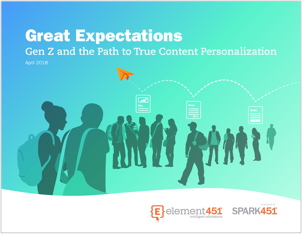
Guide to Gen Z and the Path to True Content Personalization
Gen Z expects brands to communicate with them like they know who they are. Why should colleges and universities be an exception? Learn how to create personalized campaigns at scale with this guide.
Download the White Paper
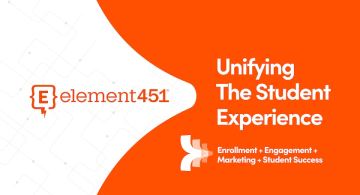
About Element451
Boost enrollment, improve engagement, and support students with an AI workforce built for higher ed. Element451 makes personalization scalable and success repeatable.
Categories
New Blog Posts
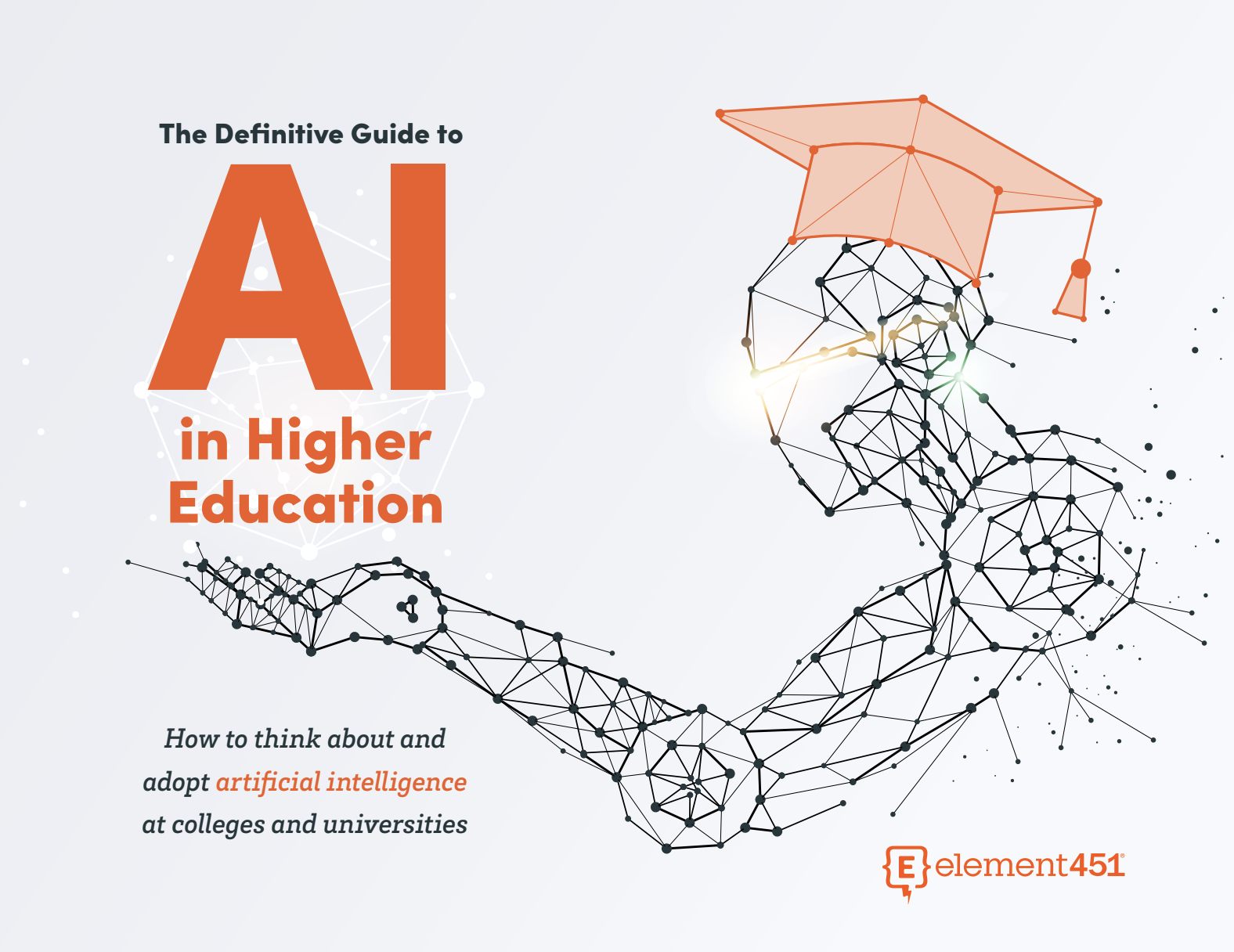
The Definitive Guide
AI in Higher Education
Bridge the gap between the latest tech advancements and your institution's success.
Useful Links
Related Articles

Talk With Us
Element451 is the only AI Workforce Platform for higher education. Our friendly experts are here to help you explore how Element451 can improve outcomes for your school.
Get a Demo



